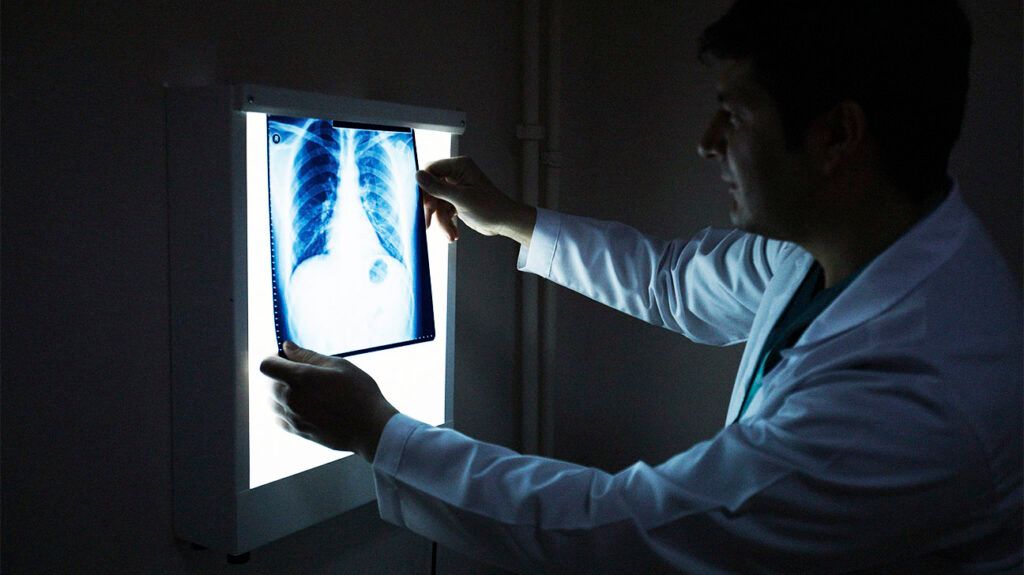The two main types of lung cancer are small cell lung cancer (SCLC) and non-small cell lung cancer (NSCLC). However, there are various other subtypes and rarer types.
Lung cancer starts in the lungs or the main airways and leads to uncontrolled cell growth. This can cause tumors to form. While anyone can get lung cancer, the risk is much higher for smokers and those experiencing exposure to secondhand smoke, certain chemicals, or toxins.
In the United States, lung cancer is a leading cause of cancer deaths.
This article explores the main types of lung cancer, including their definitions, prevalence, causes, subtypes, and treatments.

Approximately
SCLC is known for its aggressive nature and rapid growth. It tends to spread quite early on.
Causes
The main cause of SCLC is smoking. It is rare among non-smokers. Other contributing factors may include exposure to carcinogens and a family history of cancer.
While smoking is the largest known risk factor, there are people with an SCLC diagnosis who have never smoked. There are a few known risk factors for non-smokers, though women who are non-smokers are
Carcinogens are substances capable of causing cancer.
SCLC begins in the
Subtypes
There are two subtypes of SCLC: oat cell carcinoma and
Treatment
Treatment largely depends on the
NSCLC is a term describing a group of several subtypes of lung cancer. It is the
Symptoms of NSCLC include a persistent cough and shortness of breath.
Causes
The primary causes of NSCLC include exposure to carcinogens such as:
- smoking
- exposure to secondhand smoke
- radon gas
- asbestos
Genetic factors and a history of lung diseases can also increase the risk.
Subtypes
NSCLC includes several subtypes that originate from different types of lung cells, including:
- Adenocarcinoma: The most common subtype of NSCLC, it is prevalent in
40% of all cases of lung cancer. It often occurs in the outer area of the lung and develops in the cells ofepithelial tissues . - Squamous cell carcinoma: This subtype
often occurs in the central part of the lung or the main air passages, such as the left or right bronchus. - Large cell carcinoma: This subtype can appear in any part of the lung and tends to grow and spread rapidly.
Treatment
Treatment options for NSCLC include:
- surgery
- radiation therapy
- chemotherapy
- targeted therapy
- immunotherapy
The choice of treatment depends on the stage of cancer and a person’s overall health.
Pancoast tumors, also known as superior sulcus tumors, are a rare form of lung cancer, accounting for approximately
The tumor invades nearby areas, such as the ribs and spine. The majority of Pancoast tumors are a type of NSCLC.
Causes
The primary risk factors include smoking and exposure to industrial chemicals or asbestos. Pancoast tumors may also occur from other diseases, such as lymphoma or tuberculosis.
Treatment
Treatment for Pancoast tumors usually involves a combination of radiation therapy and surgery. Doctors may also recommend chemotherapy if the cancer has spread.
Carcinoid tumors of the lung are very rare, accounting for
Approximately 80% of these tumors occur centrally in the lung, while 20% are in other parts of the body.
Causes
The exact cause of carcinoid tumors is unclear, though research suggests a potential link to smoking. Genetic factors and family history can also play a role.
Subtypes
Carcinoid tumors divide into two subcategories: typical and atypical.
Typical carcinoids tend to grow slowly and rarely spread beyond the lungs. Atypical carcinoids tend to grow faster and are more likely to spread.
Treatment
Surgical removal is the primary treatment for carcinoid tumors. Depending on the case, doctors may also consider radiation therapy and chemotherapy.
Other less common types of lung cancer include
Learn more about lung cancer treatment.
To determine the type of lung cancer a person has, doctors use several diagnostic tests, including:
- chest X-rays
- CT scans
- MRI scans
- PET scans
- a bronchoscopy
- a biopsy
- molecular testing
These tests can identify the specific cause, type, and subtype of cancer, which helps doctors recommend the best treatment options.
In this section, we answer some frequently asked questions about lung cancer.
What is the most aggressive form of lung cancer?
Healthcare professionals consider SCLC to be the most aggressive form due to its rapid growth and tendency to spread early.
What is slow-growing lung cancer called?
Carcinoid tumors are known for their slow growth, so doctors consider them a type of slow-growing lung cancer.
What are the three main types of lung cancer?
The three main types of lung cancer:
- NSCLC
- SCLC
- carcinoid tumors
What is the life expectancy of a person with lung cancer?
Life expectancy varies greatly depending on the type and stage of lung cancer at diagnosis, the patient’s overall health, and response to treatment. Early stage lung cancers have a
Gene changes in the cancer cells
Lung cancer has various types and subtypes, each with distinct characteristics, risk factors, and treatment options.
Non-small cell lung cancer (NSCLC) is the most common type of lung cancer, followed by small cell lung cancer (SCLC), which is more aggressive.
Pancoast tumors and carcinoid tumors represent rarer forms with specific treatment strategies. Early detection and accurate diagnosis are crucial in managing lung cancer effectively.
